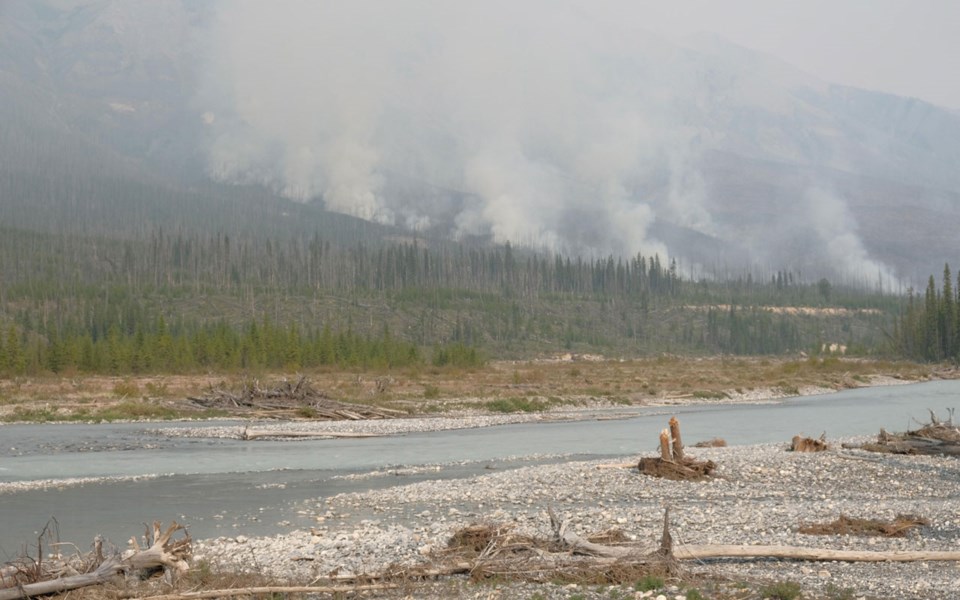The oppressive smoke that blanketed the Whistler Valley just a few short weeks ago brought into sharp focus the horror of wildfire even as it obscured the natural beauty around us.
Perhaps this is the lesson we all need to face: This summer it was only smoke that hid the forests and the trees; next summer it might be wildfire that takes them from us for years to come.
While we all suffered from the smoke, it is nothing compared to what California, Oregon and Washington state continue to endure. So far, the wildfires have destroyed more than 7,000 structures, and scorched more than 2 million hectares in those three states. Since the beginning of the year, more than 8,100 wildfires have burned.
And then there is the loss of life—more than 25 have died in these fires.
There is no doubt that climate change is making the wildfires we have close to home, and far away, worse. Higher temperatures and drier conditions mean that it is easier for ground cover to burn—and it burns hot and fast making it much harder for those on the ground to put it out.
We are also seeing wildfire seasons get longer and longer around the world—something those with Cal Fire are all too familiar with.
“The last several years with the drought and lack of rainfall, we have had a very dry vegetation which is extremely receptive to burning, so we have not been having that closure that we normally would have in the early fall,” Cal Fire spokesperson Cheryl Buliavac told the New York Times this week. “It has been a year-round fire season.”
In recent years, we have also seen Australia battle the largest wildfire in its history while parts of the Arctic, the Amazon and Central Asia have suffered massive blazes as well. (To see a rather frightening interactive map of fires around the globe, go to globalforestwatch.org. About 55 per cent of wildfires in Canada are started by lightning strikes.)
This is all context as we, here in Whistler, try to come to terms with our wildfire threat risk and how we should deal with it.
I admit to being horrified when I saw the wildfire mitigation work around some parts of Lost Lake and in the Cheakamus area along the Riverside Trail. But as I lived in wildfire smoke for a few weeks, I began to experience a new perspective on the work.
Like everywhere else in the world, our wildfire reality is changing.
“In some regions, especially in Canada, we also consider when we lose winter snow cover,” Dr. Megan Kirchmeier-Young, a researcher with Environment and Climate Change Canada, told CarbonBrief recently.
“With warming temperatures, that’s going to be happening earlier in the year and it will also be later in the year before we see cooler temperatures and the return of snow cover. So a longer fire season means more time of the year where you could have fires.”
Research led by Kirchmeier-Young found that Canada’s 2017 fire season, which saw a record 1.2 million hectares of land burned, was driven by “extreme warm and dry conditions” heightened by climate change. The study estimated that the total area burned across the season was made seven to 11 times larger by climate change.
In California, research published in 2020 found that the number of autumn days with weather suitable for wildfires has doubled since the 1980s as a result of climate change.
This week’s cover story delves into the process going on behind the scenes of Whistler’s fire mitigation work—since 2007, the Resort Municipality of Whistler has treated 205.4 hectares, spending $4.5 million ($2.25 million of which came from provincial grants).
The work is being guided by forester and biologist Bruce Blackwell, who told us this week: “I’ve been exposed to a lot of different situations—lots of different people, with lots of different opinions … What we’ve heard and seen in Whistler goes on in every community.
“My job is to basically lay out the facts of what I think are the right things to do, and let people come to common ground on how they’re going to approach it.
“But the bottom line is, if you’ve ever been near a fire that starts to go—and I’ve had a few of them—it’s a very scary, scary time, and you can only imagine it getting big and impacting so many different people’s lives.
“One day there will be a fire here that’s significant, and we’re going to have to react to it.”
Blackwell’s Protection Strategy report found that there is about 4,000 hectares of high-hazard crown land within the municipal boundary, and another 1,149 hectares within 500 metres of the structures in the core built-up area there of the resort.
And, of course, there are all the mature trees and growth in our lovely neighourhoods—greenery that is cherished by homeowners despite its obvious hazard in a wildfire situation (myself included…sigh).
But we need to consider the stats in Blackwell’s report: the RMOW is more than 24,000 hectares in size and more than 65 per cent of that is forested. There are more than 9,200 homes.
Look out your windows and see how you can help.




